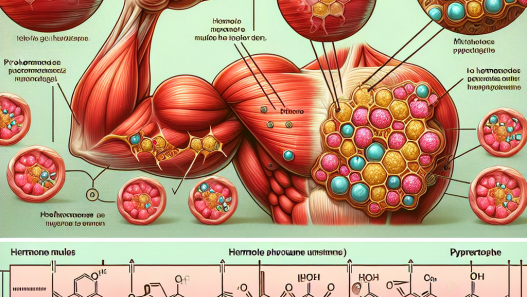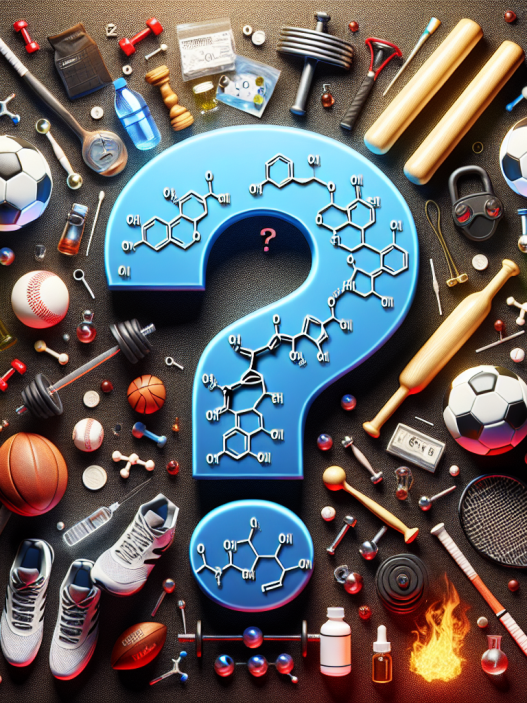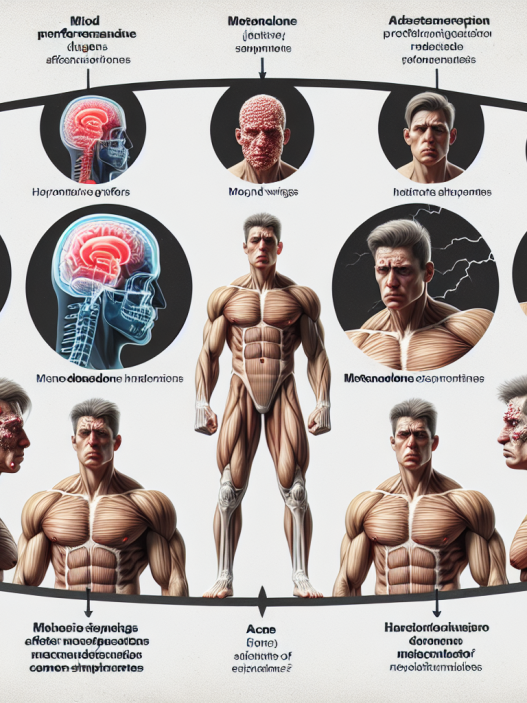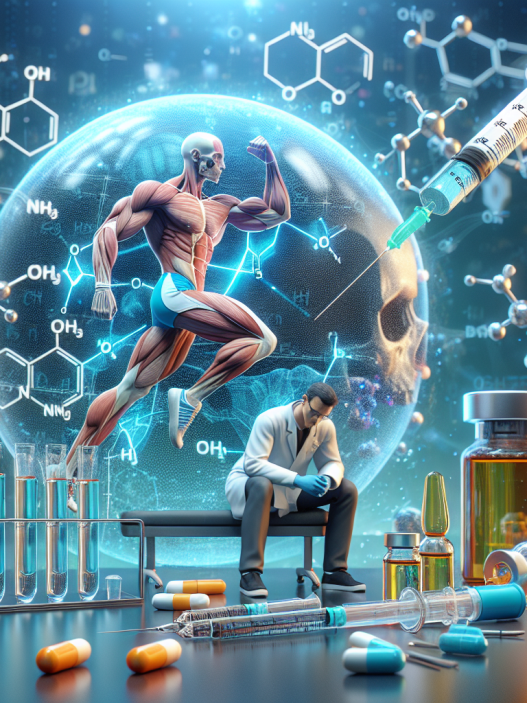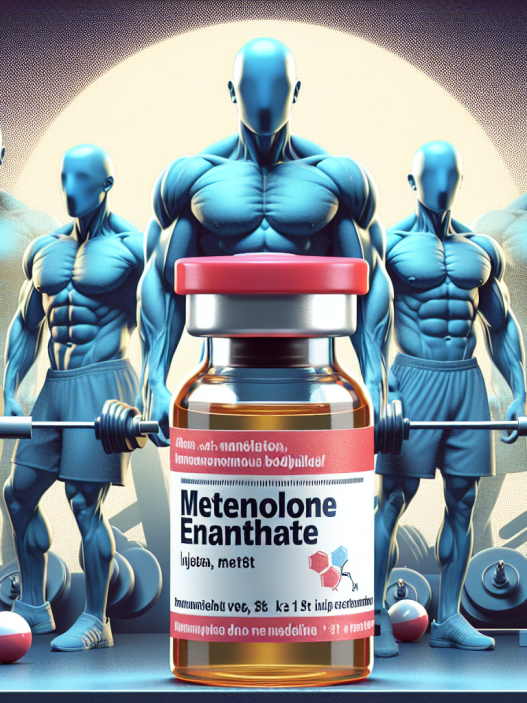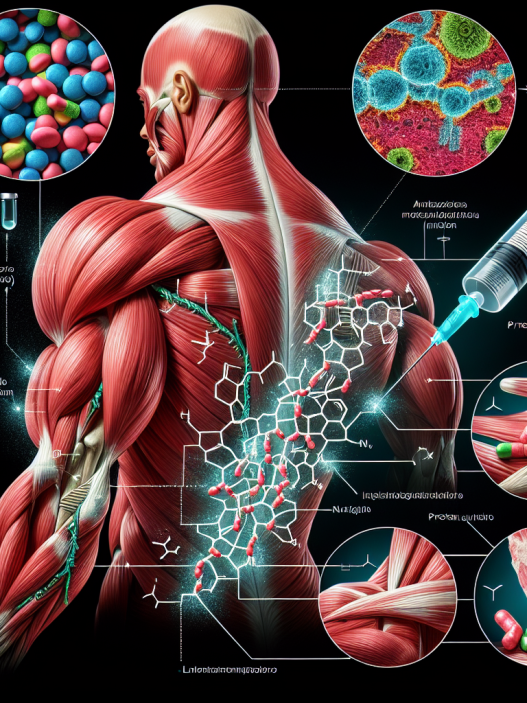-
Table of Contents
Assessing Nandrolone Decanoate’s Effects on Sports Performance
Sports performance is a highly competitive field, with athletes constantly seeking ways to improve their physical abilities and gain an edge over their opponents. One method that has gained popularity in recent years is the use of performance-enhancing drugs, or PEDs. Among these drugs is nandrolone decanoate, a synthetic anabolic steroid that has been used by athletes to increase muscle mass and strength. However, the use of nandrolone decanoate in sports is a controversial topic, with many questions surrounding its effectiveness and potential side effects. In this article, we will delve into the pharmacokinetics and pharmacodynamics of nandrolone decanoate and assess its effects on sports performance.
The Pharmacokinetics of Nandrolone Decanoate
Nandrolone decanoate, also known as Deca-Durabolin, is a synthetic derivative of testosterone. It is administered via intramuscular injection and has a long half-life of approximately 6-12 days (Kicman, 2008). This means that it can remain in the body for an extended period, making it a popular choice among athletes who want to avoid frequent injections.
After injection, nandrolone decanoate is rapidly absorbed into the bloodstream and reaches peak plasma levels within 24-48 hours (Kicman, 2008). It is then metabolized in the liver and excreted in the urine. The metabolites of nandrolone decanoate can be detected in urine for up to 18 months after the last dose, making it difficult to use this drug without detection in drug tests (Kicman, 2008).
The Pharmacodynamics of Nandrolone Decanoate
Nandrolone decanoate works by binding to androgen receptors in the body, promoting protein synthesis and increasing muscle mass and strength (Kicman, 2008). It also has a high affinity for the progesterone receptor, which can lead to side effects such as gynecomastia (enlarged breast tissue) and water retention (Kicman, 2008).
One of the main reasons athletes use nandrolone decanoate is its ability to increase red blood cell production, leading to improved oxygen delivery to muscles and enhanced endurance (Kicman, 2008). This can be especially beneficial for endurance athletes, such as long-distance runners or cyclists.
The Effects of Nandrolone Decanoate on Sports Performance
The use of nandrolone decanoate in sports is primarily aimed at increasing muscle mass and strength. Studies have shown that it can significantly increase lean body mass and muscle strength in both trained and untrained individuals (Kicman, 2008). This can give athletes a competitive advantage, especially in sports that require strength and power, such as weightlifting or sprinting.
However, the use of nandrolone decanoate in sports is not without its risks. The drug has been linked to several side effects, including liver damage, cardiovascular problems, and psychiatric disorders (Kicman, 2008). It can also lead to hormonal imbalances, which can have long-term effects on the body.
Furthermore, the use of nandrolone decanoate is prohibited by most sports organizations, including the World Anti-Doping Agency (WADA) and the International Olympic Committee (IOC). Athletes who are caught using this drug can face severe consequences, including disqualification and loss of medals.
Real-World Examples
The use of nandrolone decanoate in sports has been a controversial topic for many years. One high-profile case involved American sprinter Marion Jones, who was stripped of her Olympic medals after testing positive for nandrolone in 2006 (Kicman, 2008). Another example is the case of baseball player Alex Rodriguez, who was suspended for the entire 2014 season for using nandrolone and other PEDs (Kicman, 2008).
These cases highlight the serious consequences of using nandrolone decanoate in sports and the importance of drug testing in maintaining fair competition.
Expert Opinion
While nandrolone decanoate may have some benefits in terms of increasing muscle mass and strength, its use in sports is highly controversial and carries significant risks. As a researcher in the field of sports pharmacology, I believe that the potential side effects and the fact that it is a banned substance make it an unwise choice for athletes looking to enhance their performance. Instead, athletes should focus on natural training methods and proper nutrition to improve their athletic abilities.
References
Kicman, A. T. (2008). Pharmacology of anabolic steroids. British Journal of Pharmacology, 154(3), 502-521.






